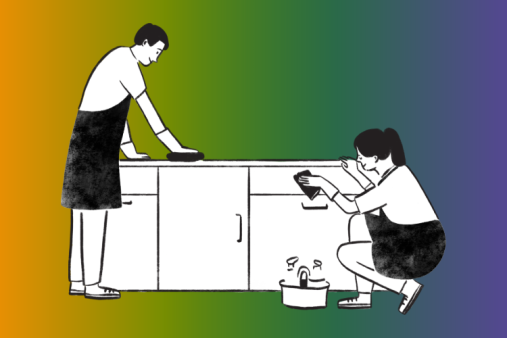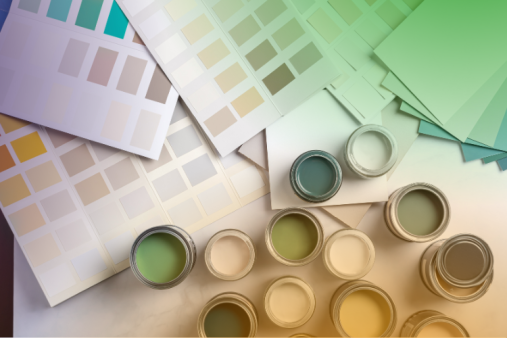Painting interior woodwork - It’s not a major job to freshen up the appearance of your home by painting the skirting boards, window frames or door frames.
However, it’s a job which many of us put off doing because we think it’s time consuming, difficult, and something best left to the professionals.
That doesn’t have to be the case though.
So if your interior woodwork is starting to look a bit worse for wear, here’s how to get it looking sparkling and new in no time.
Preparing Your Interior Woodwork For Painting
This is perhaps the hardest part of the job.
But... making sure you take time over the preparation will help to guarantee a better result in the end.
Start by washing over your door frames, skirting boards or window frames using something like sugar soap.
This will easily remove grease and dirt and will let you evaluate the state of the woodwork.
At this stage, any holes can be filled and rough parts can be rubbed down.
Depending on the type of paint you have chosen you might have to rub down all of the paintwork using a light sandpaper.
The aim of this isn’t to remove all of the existing paint, you just have to remove the top shiny surface of the old paint to provide a surface which the new paint can stick to.
This is called creating 'a key'.
Protect your Carpets When Painting Interior Woodwork
Painting interior woodwork can be messy.
Gloss paint, in particular can be very difficult to remove from carpets.
Before you get the paint can open, protect your floors and walls using dust sheets and masking tape.
Take care to making sure you fix protective covers firmly in place, especially when painting skirting boards.
Don’t risk painting your woodwork without something to protect the rest of the room.
Cover furniture with dust sheets as accidents do happen.
Choosing Your Interior Woodwork Paint
 Woodwork has traditionally had a gloss, shiny finish but this look has fallen out of fashion in recent years.
Woodwork has traditionally had a gloss, shiny finish but this look has fallen out of fashion in recent years.
Many homeowners prefer a matt finish instead nowadays.
There are no right or wrong choices when it comes to paint.
It really is just a matter of personal preference.
Many modern paints have designed to be “one coat”, meaning you don’t have to use a primer first.
Other brands will recommend using a primer and at least two coats of paint.
Look carefully at the instructions on the can.
Weigh up the cost of buying a more expensive “one coat” type of paint or larger quantities of paint, plus primer.
If you, or a family member has a tendency to be affected by fumes when painting, consider buying one with lower fume emission.
Doing the Interior Woodwork Painting Job
 The actual painting is perhaps the easy bit!
The actual painting is perhaps the easy bit!
Just take your time, don’t rush the job and apply thin coats of paint.
Use the correct size of brush for the job.
Don’t fall into the trap of thinking that a big brush will mean the job gets done quicker.
If you are using primer and more than one coat, allow each layer to dry completely before attempting to apply the next coat.
Wait until the paint is dry and hardened before carefully removing any masking tape and protective coverings.
Voila. You now hopefully have undertaken your task of painting interior woodwork and can step back and admire your handiwork.
If you do decide you'd rather get professional painters and decorators in then feel free to post a quote request with Top Tradespeople.
We can help you find and compare several quotes from local people near you, without obligation.








